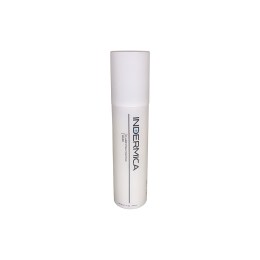Navigating regulatory compliance in the skincare industry.
The aesthetics and skincare industry is constantly on a hamster wheel of innovation. But where innovation meets regulation, the journey of launching skincare products demands meticulous attention to compliance.
Jennifer Rudd, a seasoned cosmetic regulatory consultant and the brain behind Skincare Business Foundations, brings a wealth of expertise to the table. With a blend of business acumen and an in-depth understanding of psychology, Jennifer assists entrepreneurs in confidently venturing into the world of cosmetics.

We sat down with Jennifer to find out what skincare companies have to consider in their R&D, and what makes “best practice”.
What current guidelines or procedures are in place for skincare companies when it comes to manufacturing products?
Interestingly in Australia, there is no specific licensing requirement for manufacturing cosmetics, meaning there is a relatively low barrier to entry for new brands. However, to comply with the Australian Consumer Law, companies must ensure their products are safe for consumer use.
Following Good Manufacturing Practices (GMP) is highly recommended, though not legally mandated, as it provides a comprehensive framework for ensuring product safety, consistency and quality.
What claims can a product company make or not make?
Skincare brands often walk a fine line between highlighting the benefits of their products and making therapeutic claims.
For cosmetics, claims must be surface-level / superficial statements about appearance and smell, such as cleansing, moisturising, smoothing, perfuming or protecting the skin. You can’t make claims that a cosmetic product will prevent or treat a disease, illness or named skin condition, or affect a physiological process on the body – that would be a therapeutic claim.

This includes claims on a label, website, social media, ads and even testimonials! Examples of therapeutic claims I often come across being made about cosmetics include “heals eczema”, “relaxes muscles” and “boosts collagen production”. If a consumer thinks a cosmetic product is for therapeutic use based on its claims, the product would be deemed a therapeutic good.
Therapeutic goods are strictly regulated by the Therapeutic Goods Administration (TGA) and must be listed or registered on the Australian Register of Therapeutic Goods (ARTG). It’s important to comply to protect the health of your customers, and the TGA could issue a warning notice or fine for non-compliance.
Companies also need to be wary of not making any false or misleading claims, e.g. around the benefits, performance or environmental impacts of a product. Claims should be able to be substantiated with appropriate evidence.
The ACCC has recently been cracking down on greenwashing – and they’ve made it clear that vague claims like “eco-friendly” and “sustainable” are unacceptable because they could mislead consumers.
Is there such thing as “medical-grade”? What does this aim to imply?
“Medical-grade” skincare is generally used to describe products that claim to have higher concentrations of active ingredients than other cosmetics – much like the term “cosmeceuticals”. Both these terms are used to imply the products are more effective or offer benefits beyond regular beauty products. But the reality is these terms aren’t regulated and are just marketing buzzwords – used mainly by in-clinic brands in the beauty industry!

I’ve never understood how a product can be “medical-grade” when it’s not on the ARTG and can’t make claims about therapeutic benefits! At the end of the day, they are still cosmetics and regulated as such.
What MUST be included or declared on the packaging of products?
Labels and packaging not only help products to stand out on the shelves, but they also communicate vital information to your customers.
There are actually more than six different laws and regulations that apply. Most people know their packaging requires an ingredient listing – but I come across a lot of products that are missing other mandatory information such as a physical address! (PO Boxes are not permitted).
Surprisingly in Australia, expiry dates aren’t legally required, but many brands choose to include a Period After Opening symbol which is an EU requirement. Depending on the ingredients in a product, poisons warnings may be required.
What’s important to note is it’s not just about including the right information, but including it in the right format, position and size – particularly when it comes to the measurement marking (i.e. the net weight or volume). 99% of labels I review are non-compliant!
Read the latest issue of SPA+CLINIC below:
There are 5 ways you can catch up with SPA+CLINIC
- Our quarterly print magazine, delivered to your door. Subscribe here.
- Our website, which is updated daily with its own completely unique content and breaking news.
- Our weekly newsletter – free to your inbox! Subscribe here.
- Our digital magazine – click here to view previous issues.
- Our social media – see daily updates on our Instagram, Facebook & Linkedin




